
Where to Start with Cedar Trees
Published: 27/02/2024 | Updated: 26/04/2024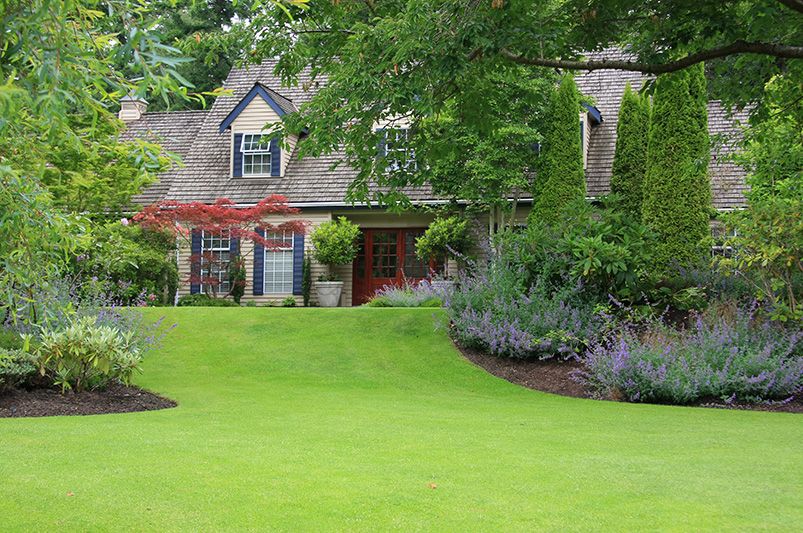
Cedar trees are some of the most popular and widely planted trees all over the world. When planning a landscape, they definitely should be on your mind. This guide will walk you through all the essential information you need to know about Cedar trees and how to care for them as well as recommend our favorite cedar trees to plant.


For more guides and helpful tips about landscaping and gardening, check out our weekly blogs where we continuously cover everything related to hardscaping, plants, budgeting, garden care, and more.
A Full Guide to Cedar Trees
Before we get into the details of our favorite Cedar trees, let's first get into what exactly are cedar trees, the difference between true and false cedar species, and what are the ideal conditions to plant them in.
What are Cedar Trees?
Cedar trees are evergreen trees that belong to the Cedrus genus of the Pinaceae family. Those trees originate from the Mediterranean region and other parts of Asia.
When we're speaking about cedar trees, we are usually referring to two types of cedar trees: true and false cedars.
True and False Cedar Trees
The distinction between true cedars and other trees commonly called "cedar" lies in their botanical classification, leaf structure, cone shape, and geographic origins.
The term "true cedar" typically refers to trees belonging to the genus Cedrus in the family Pinaceae, as mentioned. True cedars belong to the Cedrus genus and have distinct characteristics like needle-like leaves arranged in clusters and large, barrel-shaped cones.
The most commonly known species of true cedars include the Atlas cedar (Cedrus atlantica), the Lebanon cedar (Cedrus libani), and the Cyprus cedar (Cedrus brevifolia).
Other trees that are commonly called "cedar" are not true cedars but rather belong to different genera within the Cupressaceae family. On the other hand, the "cedar-like" trees belong to different genera such as Juniperus and Thuja. They typically have scale-like or feathery foliage and smaller cone structures. These trees are found in various regions across North America and Europe.
These trees include the Eastern Red Cedar (Juniperus virginiana) and the Western Red Cedar (Thuja plicata) found in North America, as well as the White Cedar (Thuja occidentalis) found in North America and Europe.
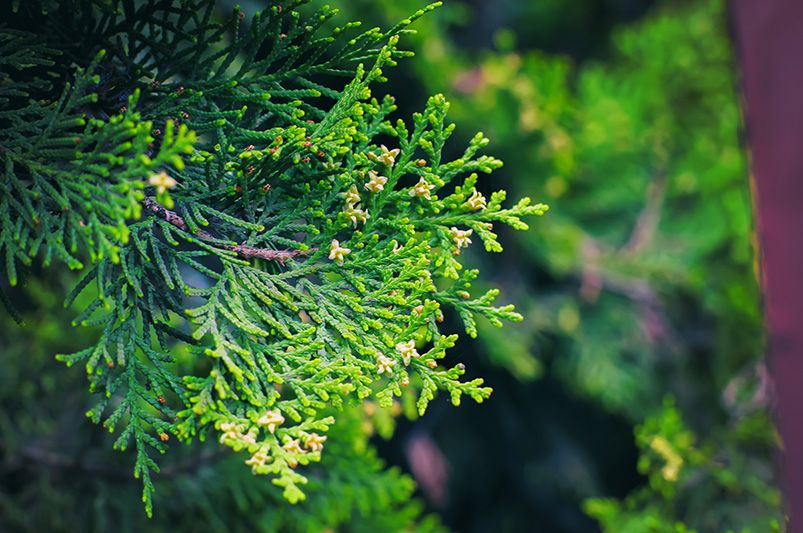
Characteristics of Cedar Trees
Cedar trees are known for their aromatic scent and can grow up to 50-70 feet tall, with some species growing even taller. Cedar trees have a distinctive pyramidal shape and can often be seen as ornamental trees or as an important source of timber.
Cedarwood has been used for centuries in construction, furniture-making, and as a material for making pencils. The oil extracted from cedarwood is also widely used in aromatherapy and perfumes because of its delicate and long-lasting scent.
Cedar trees are also valued for their ecological significance as they are important habitats for birds and other wildlife.
Generally, they have a high tolerance to drought and can thrive in a variety of soils and climates. However, they still thrive most in particular circumstances and conditions.
Ideal Conditions for Cedar Trees
When it comes to caring for cedar trees, here are some guidelines to follow:
Location
Choose a sunny location with plenty of room for the cedar tree to grow. Make sure there is enough space for the tree to spread out its branches.
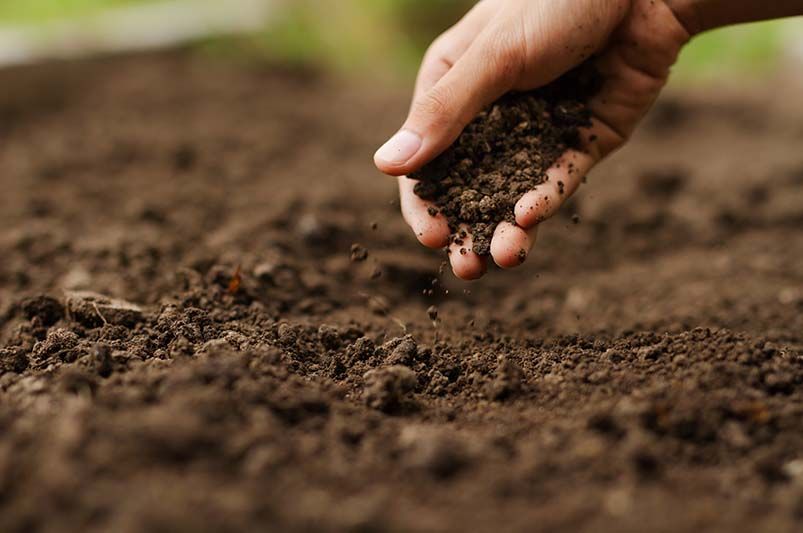
Soil
When it comes to soil conditions, cedar trees prefer well-drained soil. A slightly acidic soil, with a pH level between 6.0 and 6.5 is preferred. Soil type doesn't matter as long as it's a well-draining type.
For example, heavy clay soil isn't good for cedar trees as it retains too much water and can lead to root rot.
If the soil is heavy clay, consider amending it with organic matter, such as compost, to improve drainage and fertility.
Watering
Though they don't do well in overly moist, wet, or boggy soil, Cedar Trees still require regular watering. That is especially the case during hot and dry periods.
Allow the soil to dry out completely between waterings, but water deeply each time.
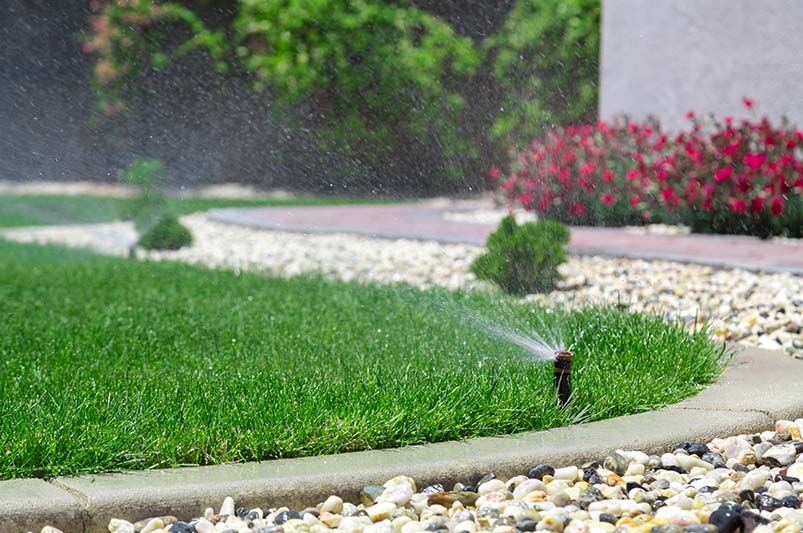
Mulching
As much as they don't require consistent moisture, mulching around the cedar tree is preferred as it can protect them from mechanical damage, and suppress weed growth.
Apply a layer of organic mulch around the base of the tree, about 2-4 inches thick.
Fertilizer
If planted in soil with moderate nutrients, you will not need to fertilize. In case the soil is poor and lacking in key nutrients, however, you should fertilize with a low-nitrogen fertilizer.
Apply in fall or spring.
Pruning
Cedar trees do not require regular pruning, but periodic maintenance pruning may be necessary to remove damaged or diseased branches and improve air circulation and sun exposure.
Of course, you can also prune to control the size and shape of the tree.
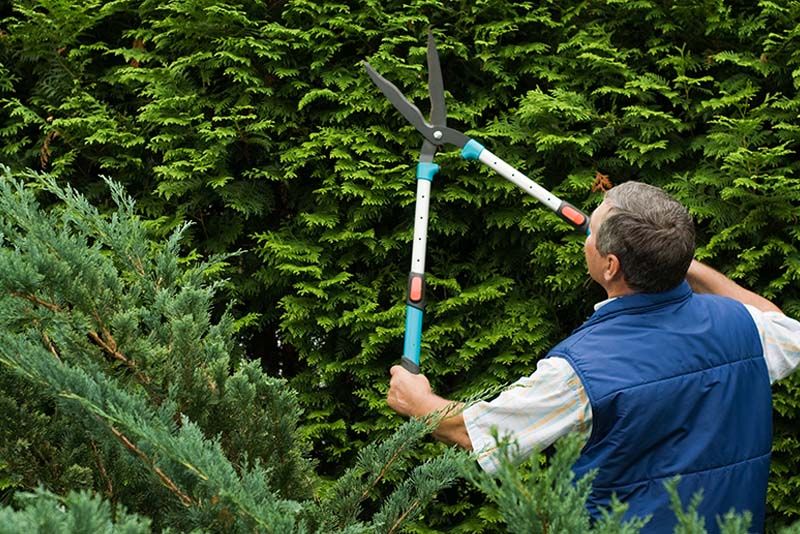
Pest and Disease Control
Cedar trees are generally resistant to pests and diseases. However, occasional pest issues such as cedar-apple rust or bagworms may occur.
Regular monitoring and appropriate treatment, if necessary, can help control these issues.
Those are just the general conditions that cedar trees usually need. However, more particularized care, depending on each specific tree, will be better for a thriving garden.
To take good care of cedar trees and all other plants, you need to have a suitable landscape design, which is accommodating to what you intend to do with them. There's no better time than now to start thinking of your new landscape design, especially as we're offering a 70% discount on all our design services at Shrubhub. This includes both 2D and 3D landscape design services.
All you'd need to do is sign up here and a professional designer from our team will contact you as soon as possible.
Some Cedar Trees to Start With
Cedar trees are a popular choice for landscaping. They are beautiful, strong, and resilient. Whether true cedars or otherwise, if you live in an accommodating climate, then you should strongly consider planting one or two cedars in your garden.
This list includes both types of cedar trees so that you can have a diversity of choices.
Atlas Cedar
Known by the botanical name Cedrus atlantica, Atlas cedar trees boast the dark green, dense foliage of true cedars, with a pyramidical shape. It's named after the Atlas Mountains of Morocco, where it's native.
This large coniferous evergreen can grow up to 115 feet tall. It is relatively slow growing, however and would take up to 20 years to reach its full height.
Atlas cedars, like other cedar trees, grow best in well-drained soil and the full sun.
Different cultivars of the Atlas cedar exist, including the blue Atlas cedar, whose foliage is marked by a melancholic gray-blue color, and the weeping Atlas Cedar, which flaunts a drooping growth habit similar to other weeping trees.
Cyprian Cedar
Also known as Cedrus brevifolia, this true cedar has bluish-green needles. As apparent in its name, it's native to Cyprus, specifically to the Troodos Mountains on the Island.
It is a small to medium-sized evergreen tree that grows in a conical shape. It can grow up to 82 feet tall, which is not necessarily large when it comes to Cedar trees.
The cedar wood and timber of the Cyprus cedar are so valuable that it led to heavy exploitations of the tree in the past, causing it to be a protected, threatened species now.
Similar to other true cedars, the Cyprian cedar produces large, barrel-shaped cones that are about 6 to 8 centimeters long. The cones turn brown from their original green as they mature.
Like other cedars, this tree is adapted to the Mediterranean climate. This means it's drought tolerant and can tolerate dry summers and rocky conditions.
However, for it to thrive, water deeply, if infrequently, and grow it in a well-drained spot with the full sun.
The Cyprian cedar is less well-known compared to its relatives like the Atlas cedar or Lebanon cedar, but it is a unique and interesting species that is native to Cyprus. By planting it, you'll also be contributing to the global protection and rejuvenation of this stunning tree.
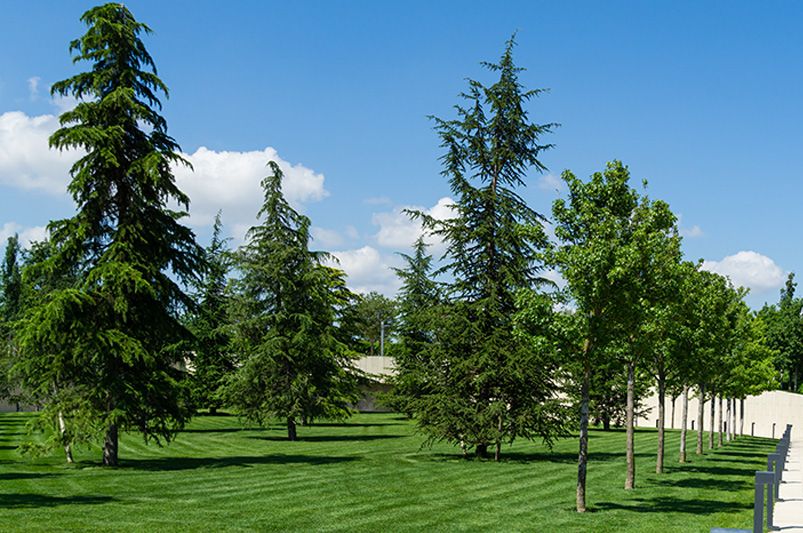
Himalayan Cedar
Also known as deodar cedar tree, just deodar or botanically as Cedrus deodara, Himalayan cedar is an evergreen cedar, native to the Western Himalayas. This true tree can grow up to 130-160 feet tall, but it has been recorded that some deodars have reached nearly 200 feet tall.
The trunk can have a diameter of up to 10 feet, remarkably wider than many other cedar trees. It's best to grow it if you have wide open spaces.
The tree has a conic crown with drooping branchlets, giving it a distinctive appearance. It has blue-green needle-like leaves.
Though like other Cedars, it's historically grown for its timber and carpentry purposes, it's among one of the most popular ornamentals among cedar trees.
The tree can tolerate a wide range of temperatures and moisture levels but is more receptive to moisture than other cedars. Make sure it receives adequate moisture.
There are different cultivars of the Himalayan cedar, including the golden deodar and the aurea, both of which flaunt golden-yellow foliage. The original one, though, has bright green needles and large, elegant cones.
Cedar of Lebanon
Cedar of Lebanon, or Lebanon cedar, also known as Cedrus libani, is an evergreen conifer. This true tree can grow up to 100 feet tall, smaller than other types of cedar trees.
It has a pyramid shape and rich green foliage, with spreading branches and large, irregularly shaped heads. Technically, it's also a pine tree. Similar to the Cyprus cedar, the Lebanon cedar is also a protected and highly valued species, additionally because of its cultural and religious significance in Lebanon.
But it is also valued worldwide for its elegant, majestic beauty.
This tree is typically planted in late fall and thrives in cold temperatures with full sun.
Incense Cedar
Also known as Calocedrus decurrens, the Incense-cedar is known for its aromatic foliage and reddish bark in addition to its typical pyramidal shape. When bruised, it also emits a very pleasant aroma, earning it its name.
Though there is debate, the incense cedar is technically a false cedar as it belongs to the Cupressaceae family and is native to California and Oregon in Western North America,
This large tree can grow to 100 to 150 feet tall. It has a straight trunk and spreading branches with sprays of branchlets.
Western Red Cedar
Scientifically known as Thuja plicata or Western Redcedar, Western Red Cedar is an evergreen coniferous tree. Native to the Pacific Northwest of North America, Western Red Cedar belongs to false cedars.
The Western Red Cedar is among the most resilient false cedars but is also highly valued for its attractive appearance, with its reddish-brown heartwood and pale yellow sapwood.
Western red cedar is a popular ornamental tree that is also grown for its wood, which is used for various purposes such as shingles, posts, and boat making.
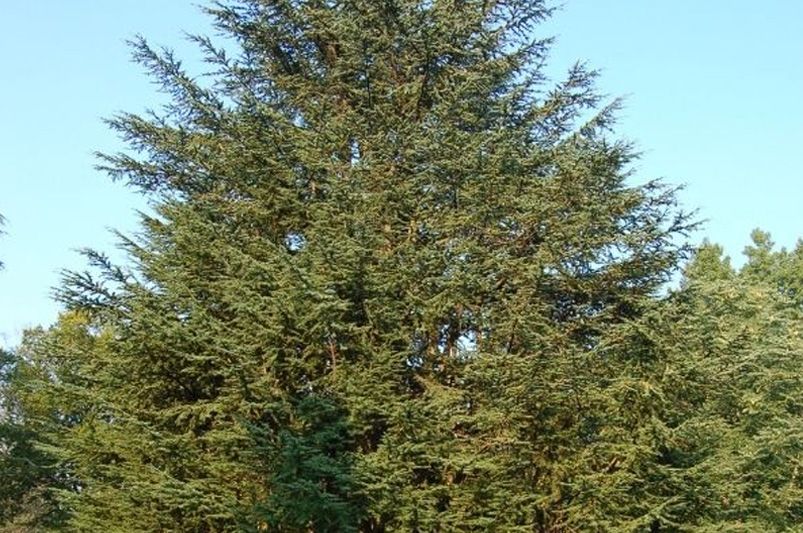
Eastern Red Cedar
Also known as Juniperus virginiana, the Eastern Red Cedar Tree has a lot in common with Western red cedar. Both are false cedars, with Eastern red cedar being native to Eastern North America.
Sharing the same reddish-brown bark with Western red cedar, Eastern red cedar also boasts bluish-green attractive foliage. It has a coarse texture that lends it an attractive appearance.
Northern White Cedar
Northern White Cedar, botanically known as Thuja occidentalis, or referred to as American Arborvitae, is a popular false cedar.
This tree is native to eastern Canada. It's a fast grower and very sturdy, making it a popular living fence. It's relatively small, however, with a maximum height of 40 feet tall.
It's adaptable to different growing conditions, preferring the full sun to partial shade and well-drained soil. It can be grown in USDA hardiness zones 3-7, with a large variety in the conditions it accepts.
The trunk of the tree is often twisted, and strongly tapered, giving it an interesting appearance.
Spanish Cedar
Spanish Cedar, scientifically known as Cedrela odorata, and referred to as Cedro or Cedro Rojo, is a stunning hardwood tree, that is native to Central and South America and the Caribbean, not Spain or Europe, as its name might mislead.
It has a light pinkish to reddish-brown heartwood and aromatic foliage. It's highly resistant to rot. Spanish Cedar is highly valued in the American tropics and is commonly used for a variety of purposes such as veneer, boat building, and musical instruments.
Its light color and unique properties make it a popular choice among woodworkers and craftsmen, but also be grown ornamentally in landscapes.
For more types of Cedar trees, check out our Shrubhub market where you can be certain to receive your young trees in their most healthy shape with no delivery mishaps.
In this guide, there is everything you need to know about Cedar trees to start growing them in your landscape right away. We have covered all the essential facts about them, including the differences between true and false cedars and how to take perfect care of them. The cedar trees we recommended are our favorite and some of the most common.


